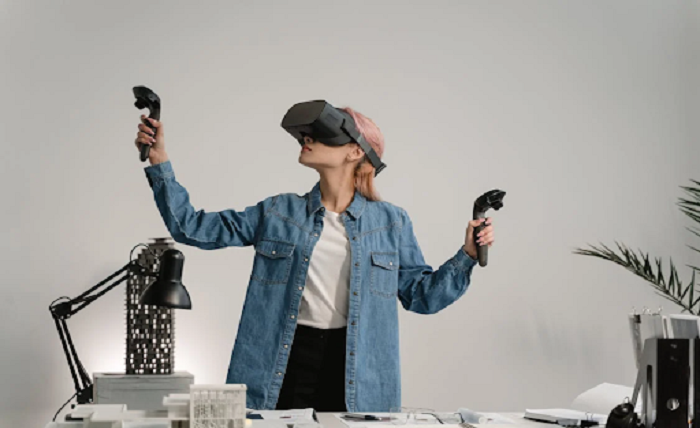People now spend a significant portion of their day online. As a result, creating virtual spaces that feel authentic and engaging has become a crucial goal. A well-designed digital experience can help people feel connected, interested, and even excited to return.
Many ideas for building these spaces originate from the real world. Museums, theme parks, and learning centres have spent years finding ways to capture people’s attention. Their lessons can guide how virtual experiences are planned and built.
Effective digital design seamlessly integrates technology with an understanding of human needs. When developers take time to learn what works in physical spaces, they can create online environments that feel comfortable and welcoming. These ideas can shape more intuitive tools, engaging games, and user-friendly meeting spaces.
Understanding Immersion in Virtual Spaces
A strong virtual experience often feels like stepping into a fully realised alternate environment. This feeling comes from clear visuals, smooth sounds, and tools that respond without delay. When these elements work in harmony, users can focus on exploring rather than thinking about the technology.
Clear sensory cues help guide users naturally. Simple touches—such as background sounds, gentle animations, or small movements—can signal where to go or what to do next. These details reduce confusion and create a smoother experience.
Many platforms utilise live video and real-time features to create an active and engaging space. For instance, live casino rooms combine video streams, chat tools, and real hosts to build trust and create a lively atmosphere. This approach shows how incorporating human presence into technology can enhance people’s sense of involvement and engagement.
It’s also essential to consider how time is used in virtual environments. Long waits or slow loading screens can break the sense of presence. Designers who prioritise speed and seamless transitions can hold users’ attention for longer.
Design Principles Inspired by Physical Spaces
Lessons from real spaces are helpful when shaping digital ones. Museums often guide visitors along a clear path, using signs and stories to maintain strong interest. This method helps people avoid feeling lost and enables them to view each section in sequence.
Theme parks focus on creating environments that feel alive and engaging. Large signs, themed walls, and friendly staff all work together to welcome guests. In virtual settings, bright visuals, clear labels, and gentle guidance can create a similarly inviting experience.
Adding small surprises can make an experience more memorable. A sudden animation, a hidden message, or an unexpected fact can spark curiosity. When balanced with simple layouts, these touches keep users engaged without overwhelming them.
People also respond well to spaces that align with their expectations. A familiar layout makes it easier to explore new tools. When a design feels natural, users are more likely to feel at ease and willing to engage.
Applying These Lessons to Virtual Environments
Creating a digital space that feels clear and welcoming requires thoughtful consideration of its functionality and design. Simple menus and well-labelled buttons help users find what they need without frustration. Prolonged confusion can drive users away.
Interactive tools can build a stronger bond between the user and the environment. Buttons that light up, sounds that play after a click, or small pop-ups offer valuable feedback. These cues show that every action serves a purpose.
Accessibility is another crucial aspect of effective design. Large text, high colour contrast, and simple navigation support people with diverse needs. When everyone can participate easily, the experience becomes more inclusive.
It also helps to design spaces that evolve over time. Frequent updates—whether in content, features, or layout—help sustain user curiosity and demonstrate ongoing care. A space that stays the same for too long may begin to feel stale.
The Role of Technology and Human Connection
Technology plays a vital role in creating immersive digital spaces. High-quality images and clear sounds can make virtual environments feel more believable. These tools capture users’ attention and enrich their overall experience.
Sharing experiences with others also adds warmth to virtual spaces. Chat features, shared workspaces, or live tours can foster a sense of community. A simple conversation or collaborative task can transform a quiet interface into a vibrant, shared experience.
Clear design is just as important as advanced technology. When tools are easy to find and intuitive to use, people feel more confident exploring. A clean, uncluttered layout helps prevent stress and distraction.
Developers who actively seek and respond to feedback can continually improve their platforms. Listening to what users enjoy—and where they face challenges—often leads to the most meaningful enhancements.
Final Words
Building an immersive virtual experience takes more than fancy graphics or clever tools. It requires careful thinking about how people feel, what they need, and how they move through a space. Real-world places—such as museums and theme parks—have already shown what keeps visitors engaged.
Learning from these examples can help anyone design a digital world that feels warm, inviting, and dynamic. As you develop your virtual project, consider the emotional impact of physical spaces—they may offer just the right inspiration to bring your online environment to life.
You May Also Like :
